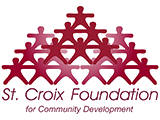At the end of our 5 year partnership with several local public schools, we concluded that in addition to teacher quality, the issue of school leadership was equally critical and offered great opportunities for growth and system-wide educational reform. While nationally the educational reform spotlight is often focused on teacher training, technology, and curriculum standards, we have found that successful schools not only have great teachers but also have stable and dynamic leaders.
To begin this discussion, we want to first relate some hardcore facts about our experience with public education leadership. During the first four years of our partnership with our pilot junior high school, we saw 3 Principals, 6 Assistant Principals, 3 Insular Superintendents, 3 Acting Commissioners, and 2 confirmed Commissioners. Nothing else we could say more clearly illustrates what goes on at the helm of our public education system. To state it plain and simple, in our opinion, revolving doors do not a stable system make.
Now, we in no way mean to suggest that successful school districts don’t employ some of the same rotation tactics that we see in the Territory. But, once they find the quality of leadership they are comfortable with, they step back and let successful principals lead–even if it means watching scores slip a bit as whole-scale, long-term reform efforts get under way.
Having spent time exploring what effective school leadership looks like, the reality is that principals have a herculean role to play in our schools. They are tasked with being caretakers of hundreds of students and faculty members, not to mention facility managers and instructional leaders. Based on national statistics, the average ratio of principals to student population is 1 to 306. In some cases in the Virgin Islands, the principal to student ratio is double that, causing our principals and assistants to struggle daily to build relationships and capacity for improvement among their many stakeholders- teachers, students, parents, and community members.
As it turns out, many of the characteristics found in great leaders in the corporate world are similar to those possessed by the leaders of great schools. Our experience indeed mirrors these findings as well as those of From Good Schools to Great Schools, whose authors identified the characteristics of strong educational leaders as: 1) Has compelling modesty, humble yet fearless; 2) Has unwavering resolve; 3) Nurtures a culture of discipline which promotes teacher responsibility; 4) Is persistent in hiring the right people; 5) Is passionate about student achievement; 6) Puts school first, before personal ambitions; 7) Builds strong relationships by exhibiting people skills.
According to our research, one of the most important characteristics is the last: the ability of principals to build relationships. It is the one area that great principals excel at beyond all others. While they may not arrive on the job with extensive skills and experience in accounting, facility management, human resources, or labor law, great principals do have the skill, willingness, and yes, even eagerness, to build the relationships required to get the support they need from those who do know.
Today, understanding the importance of the role of principals, the Foundation has been struck by the degree to which the selection process for principals at public schools in the Virgin Islands remains almost entirely insular. In a field that is highly dynamic and at a time when global economics rules the day, it is perplexing that our principals (and other district leaders, for that matter) continue to be drawn solely from the ranks of our local teacher pool.
Of course, we are in no way suggesting that there are not highly qualified homegrown leaders already at the helms of some of our schools. In fact, if one takes a look at our highest performing public schools throughout the Territory, they need not look further than the principal. But, without sufficient “density” in our leadership pool, the prospect that all of our schools will be led by the brightest and the best remains slim. Ultimately, there are amazing stories of struggling schools that have transformed into higher performing schools in a short period of time—but the stories almost always begin with dynamic, resourceful, and strategically-minded principals who have a laser focus on success.
One recommendation we offer for dealing with this issue is to encourage Virgin Islands educators, who are leading successful schools on the mainland, to return home. But to do that we must first provide all of our principals with the supports necessary to ensure their success. Another recommendation is to provide more of our educators with opportunities to intern at high performing schools abroad so they can obtain first-hand exposure to working in healthy, highly effective systems. This election season, let’s ask our elected officials what specific plans they will put in place to ensure high quality leadership at the helms of all our public schools.
For more information on the Foundation’s Education First series, please call 773.9898.
Sources & Suggested Reading
Center for Public Education: https://www.centerforpubliceducation.org/principal-perspective
Relationship Building: The First ‘R’ for Principals: https://files.eric.ed.gov/fulltext/ED501101.pdf
The Making of the Principal: Five Lessons in Leadership Training: https://www.wallacefoundation.org/knowledge-center/school-leadership/effective-principal-leadership/Pages/The-Making-of-the-Principal-Five-Lessons-in-Leadership-Training.aspx
